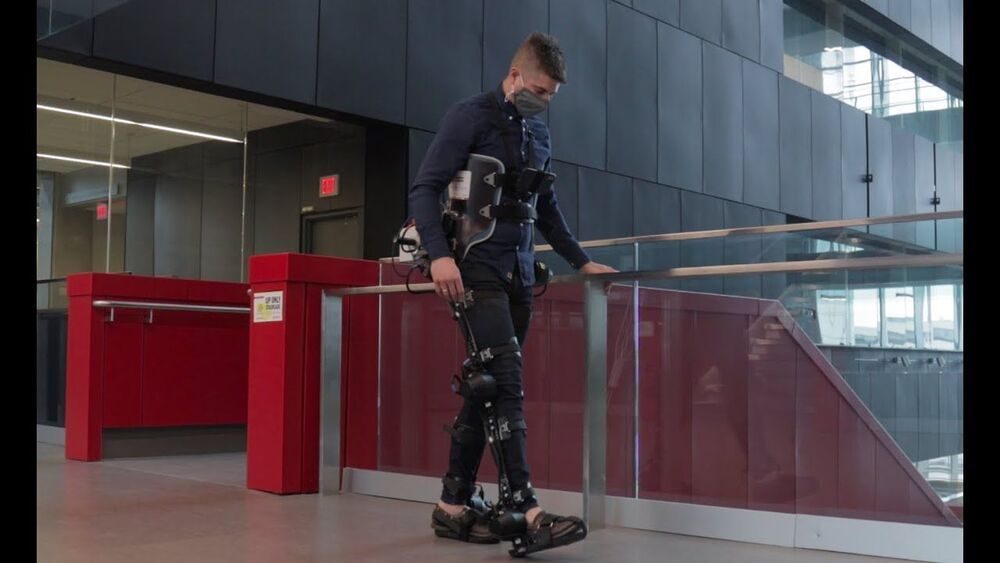You are constantly adjusting your walking parameters based on the feedback you’re getting from your environment. You walk differently on a soft surface, you prepare yourself before using stairs. Meanwhile robots cannot really do that, especially exoskeletons. These robotic legs could help disabled people walk again on their own, but how could they prepare to stop, climb stairs, make a sharp turn? Scientists believe that in the future exoskeletons are going to be smart thanks to cameras and artificial intelligence.
Currently exoskeletons need to be controlled manually via smartphone applications or joysticks. This is less than ideal, because the disabled person can’t walk as intuitively as an able-bodied person can. And his or her hands are always occupied with these controls. That kind of a cognitive load is extremely tiring and can be dangerous over time. Could you imagine needing to take out your phone every time you want to climb a set of stairs or walk through a strip of sand? Scientists want to borrow a page from a book about autonomous cars and therefore are optimizing AI computer software to process the video feed to accurately recognize stairs, doors and other features of the surrounding environment.
Brokoslaw Laschowski, leader of the ExoNet research project, said: “Our control approach wouldn’t necessarily require human thought. Similar to autonomous cars that drive themselves, we’re designing autonomous exoskeletons that walk for themselves.”










Comments are closed.